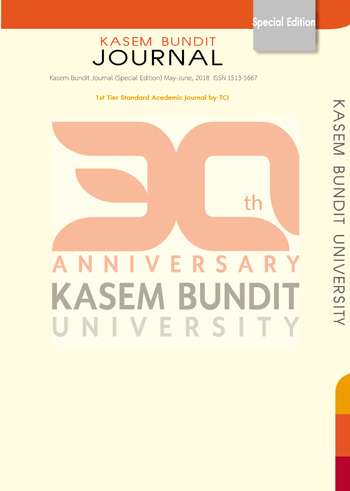Verbal Paraphrasing Technique: A Case of University English-Major Students’ Perceptions and Implementation
Keywords:
paraphrasing orally, accuracy, fluency, speaking skillsAbstract
This present study aims to explore how university English-major students perceive oral paraphrasing technique as well as to find out how their actual verbal paraphrasing is implemented. In a design of both qualitative and quantitative research, questionnaires, recorded classroom observation and semi-structured interviews were employed to collect data from adult EFL learners in the context of higher education in Vietnam. The findings may contribute to the knowledge about students’ perception of oral paraphrasing and their execution so that theoretical and practical support can be given timely. The values of this research is that it would greatly facilitate oral paraphrasing teaching technique, the quality of language instruction and improving language skills in the language classroom.
References
[2] Tompkins, G.E., & Hoskisson, K. (1995). Language Arts: Content and Teaching Strategies. New Jersey: Prentice-Hall.
[3] Lockelt, Pfleger, & Reithinger (2007). Multi-party conversation for mixed reality. The International Journal of Virtual Reading, 6, 31-42.
[4] Harris, Sipay (1990). How to increase reading ability: A guide to developmental and remedial methods. New York: Longman.
[5] Orellana & Reynol (2008). Cultural modeling: Leveraging bilingual skills for school
paraphrasing tasks. Reading Research Quarterly, vol 43(1), (p. 48-65).
[6] Gay, Mills, & Airasian (2011). Educational research: Competencies for analysis and applications: Pearson Higher Ed.
[7] Berelson, Steiner (1964). Human behavior: An inventory of scientific findings. New York, NY: Harcourt, Brace & World.
[8] Barber, Legge (1976). Perception and information. London: Methuen.
[9] Webster's Collegiate Dictionary (2003). Webster: WCP
[10] Cambridge Learner’s Dictionary (2001).Cambridge: CUP.
[11] Oxford Advanced Learner’s Dictionary .(2004). Oxford: Oxford University Press.
[11a] Iordanskaja, Kittredge, & Polgere (1991). Lexical selection and paraphrase in a meaning-text generation model. In C.L. Paris, W.R. Swartout, W.C. Mann, (Eds.), Natural Language Generation inmArtificial Intelligence and Computational Linguistics (pp.293-312). Norwell, MA: Kluwer Academic.
[12] Aaron, Jane (2010). The Little, Brown Compact Handbook. ( 7th.ed). New York: Longman. Print.
[13] Golightly & Sanders (1997). Writing and reading in the disciplines. Boston, MA: Pearson Custom Publishing.
[13] Hawes (2003). Mastering academic writing: Write a paraphrase sentence. Memphis, TN: University of Memphis.
[14] Ross (1993). Love and toil: Motherhood in outcast London, 1870-1918. New York: Oxford University Press.
[15] Choy and Lee (2012). Teacher perception of critical thinking among students and its influence on higher education. International Journal of teaching and learning in Higher Education, vol 20(2), (p.198-206).
[16] Hood (2008). Linguistics and education: An International Research Journal, vol 19(4), (p. 351-365).
[17] Kirkland & Saunders (1991). Maximizing student performance in summary writing: Managing cognitive load. TESOL Quarterly, (p.105-121).
[18] Vale, Feunteun (1995). Teaching English Children. Cambridge: Cambridge University.
[19] Anderson, V., & Hidi, S. (1988/1989). Teaching students to summarize. Educational Leadership, vol(46), (p.26-28).
[20] Anderson, Armbruster (1984). The value of taking notes during lectures. In R. Flippo & D. Anderson, Paine (1975). Managerial perceptions and strategic behavior. Academy of Management Caverly, Teaching reading and study strategies at the college level (p.166-193).
[21] Harris & Sipay, 1990
[22] Katims, Harris (1997). Improving the reading comprehension of middle school students in inclusive classrooms. Journal of Adolescent & Adult Literacy, vol (41), (p.116-123).
[23] Shugarman, Hurst (1986). Purposeful paraphrasing: Promoting a nontrivial pursuit of meaning. Journal of Reading, vol (29),396-399.
[24] Durst (1989). Monitoring processes in analytic and summary writing. Written Communication, vol 6(3), (p.340-363).
Downloads
Published
How to Cite
Issue
Section
License
ทัศนคติ ความคิดเห็นใด ๆ ที่ปรากฏในวารสารเกษมบัณฑิตฉบับนี้เป็นของผู้เขียน โดยเฉพาะ มหาวิทยาลัยเกษมบัณฑิตและบรรณาธิการ ไม่จำเป็นต้องมีความเห็นพ้องด้วย







